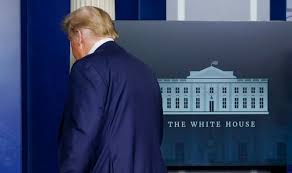During his term, President Trump issued a number of Buy American directives. Of those that proposed concrete action, two have been enshrined in U.S. regulations, one that would reduce U.S. commitments under international agreements is pending and another was abandoned. For other directives, the effect is indeterminate. The last Buy American action of the outgoing administration was publication of a final rule to maximize American-made products in government procurement. This post looks at the new regulation and other elements of the former president’s Buy American orders and their ramifications for the Biden administration.
On Trump’s last full day in office (January 19), federal agencies responsible for the Federal Acquisition Regulation (FAR) published a final rule. It amends the FAR to strengthen domestic preferences under the Buy American Act of 1933 by increasing the percentage of domestic content and the existing percentages for the price evaluation preferences, as directed by a 2019 executive order.
The final rule did not change the one proposed for public comment in September 2020. As for the public comments, the agencies merely noted that: “Most of the respondents strongly supported the proposed rule” and cited one respondent's “positive factors,” which included “improves our national image.”
The new rule increases the percentage of domestic content required for a product to be considered American-made from 50 percent to 95 percent for iron and steel products and to 55 percent for all other end products and construction materials. As a consequence, beginning with solicitations issued on or after February 22, 2021, products will be considered of foreign origin where: (i) for iron and steel end products, the cost of foreign iron and steel used in the products constitutes five percent or more of the cost of all the components; and (ii) for all other products, the cost of the foreign components constitutes 45 percent or more of the cost of all components.
Another FAR amendment increases price evaluation preferences from six percent to 20 percent for large businesses and from 12 percent to 30 percent for small businesses. With regard to the resulting higher prices, the agencies issuing the rule suggested that "robust competition among vendors offering domestic products will decrease the extent to which the Government could pay an additional 20 to 30 percent for domestic products above and beyond the cost of otherwise equivalent foreign products.”
In addition to the FAR amendments, another concrete implementation of a Buy American directive was the Office of Management and Budget’s imposition of a “soft” domestic content preference on state and local infrastructure projects that receive federal financial assistance in November 2020.
The former president's first Buy American order that sought to impose domestic preferences on pipelines constructed by the private sector “never “materialized.” His 2017 Buy American, Hire American order mandated a report on the effect of international trade agreements on U.S. Buy American laws and domestic preferences. However, the administration never made the report public or even acknowledge that it had been prepared.
The Trump administration ended before it completed another potentially consequential element of its Buy American policy. In accordance with a Trump Buy American order, the U.S. proposed to withdraw a long list of essential medicines and medical countermeasures from U.S. commitments under the WTO Government Procurement Agreement (GPA) and free trade agreements (FTAs).
A number of GPA parties, including the European Union and Switzerland, have filed objections in the WTO to the proposed withdrawal. According to Inside U.S. Trade, both the EU and Switzerland contended that the U.S. notification was incomplete because it did not fulfill the GPA requirement to include “information as to the likely consequences of the change for the mutually agreed coverage” under the Agreement. The Biden administration will need to determine whether to continue with the proposed reduction in U.S. commitments and comply with GPA requirements or to revoke the notifications.
As the scope of the proposed reduction in coverage is unprecedented, the Biden administration’s treatment of it will be watched closely to see how it balances trade agreement obligations and Buy American policies. The Buy American order that President Biden plans to issue shortly may provide insight into how he intends to approach these potentially competing interests.
Jean Heilman Grier
January 21, 2021
Related Posts
Agencies Implement Trump’s Buy American Orders
President’s Buy American Order: Raise Domestic Content
Trump’s Buy American & Hire American Order
New Buy American Executive Order
Post Permalink: https://trade.djaghe.com/trumps-buy-american-legacy/


